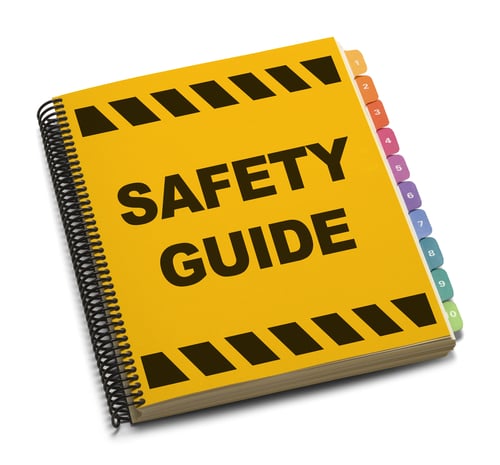Electrical-related accidents aren't the most frequent workplaceinjury, but they do tend to be more severe--leading to largerworkers' compensation claims and workplace deaths.
|According to Electrical Safety Foundation International, morethan 300,000 workers have been injured in electrical-relatedaccidents in the workplace over the past decade. Accidents includeelectrocution, shock, and arch flash and blast. Arc flash occurswhen an electrical current passes through air between ungroundedconductors, or ungrounded and grounded conductors. Arc flash canreach temperatures of 35,000 degrees and are powerful enough tokill or cause severe burns to individuals as far as 10 feet away.Workers' comp costs for arc flash accidents can reach millions ofdollars.
|Often protecting workers from electrical-related accidents canbe as simple as turning off electrical installations and equipmentbefore beginning work, and using personal protective equipment whenpower cannot be shut off.
|These simple tips are part of the National Fire ProtectionAgency (NFPA) 70 E Standard for Electrical Safety in the Workplace,which forms the core of the Occupational Safety and HealthAdministration's (OSHA) regulations for electrical safety in theworkplace. Yet, some employers do not comply with these tips,leading to workplace accidents and hefty fines.
|In March 2011, OSHA fined a Massachusetts-based company $49,000for workplace conditions that "expose[d] employees to the hazardsof fire, electrocution, and electric shock." A U.S. Postal Serviceplant in Boston was fined $357,000 for electrical hazards.
|Aside from causing danger to employees and resulting in costlyfines, electrical accidents can also result in higher operationalcosts from business interruption from plants being shut down forextended periods of time while OSHA conducts an inspection or untilpower can be restored.
|ESIS, the claimsand risk management division of ACE Group, recently released some tips to help employers mitigate workers'exposure to electrical hazards on the job. Click "next" to readwhat employers can do to prevent electrical-related accidents inthe workplace.
||
Build awareness.
|Despite the number of electrical-related workplace accidents andtheir severity, they are still uncommon enough that many employershave not witnessed one, making electrical safety something that iseasily overlooked.
|Employers should make an effort to educate all employees aboutelectrical safety. Increased awareness and communication about theimportance of electrical safety should be emphasized throughout aworkplace. Employees should understand what steps to take to ensurethey are safe from electrical hazards, and why it is important foreveryone to be cautious.
||
Conduct hazard assessments.
|Employers should conduct assessments to determine if their aregaps and weaknesses in their existing safety programs. According toESIS, electrical hazard assessments focus on four areas:
- Electrical systems studies like arc flash and shock hazardanalysis
- Examining facilities and company policies for workingconditions, equipment maintenance and repairs, tools, andtesting
- Evaluating the day-to-day work practices of employees
- Assessing company procedures and guidelines for aspects likede-energizing and re-energizing, testing and troubleshooting,safety concern reporting, performing energized work,record-keeping, and lockout and tagout

Document electrical safety programs.
|A written electrial safety program will show that anorganization takes electrical safety very seriously. Writtenprograms typically start with an introduction stating why safety isimportant to the worksite, and are followed by sections thatexplain the purpose of the program.
|The program should include responsibilities for everyone withinan organization, including supervisors and managers, employees, andrisk management staff. Safety procedures for all electrical jobsshould be properly researched and clearly stated in theprogram.
|Programs should also outline requirements for personalprotective equipment, recertification, tools and materials,alerting techniques, contractors' responsibilities, and employeetraining.
Want to continue reading?
Become a Free PropertyCasualty360 Digital Reader
Your access to unlimited PropertyCasualty360 content isn’t changing.
Once you are an ALM digital member, you’ll receive:
- All PropertyCasualty360.com news coverage, best practices, and in-depth analysis.
- Educational webcasts, resources from industry leaders, and informative newsletters.
- Other award-winning websites including BenefitsPRO.com and ThinkAdvisor.com.
Already have an account? Sign In
© 2024 ALM Global, LLC, All Rights Reserved. Request academic re-use from www.copyright.com. All other uses, submit a request to [email protected]. For more information visit Asset & Logo Licensing.








